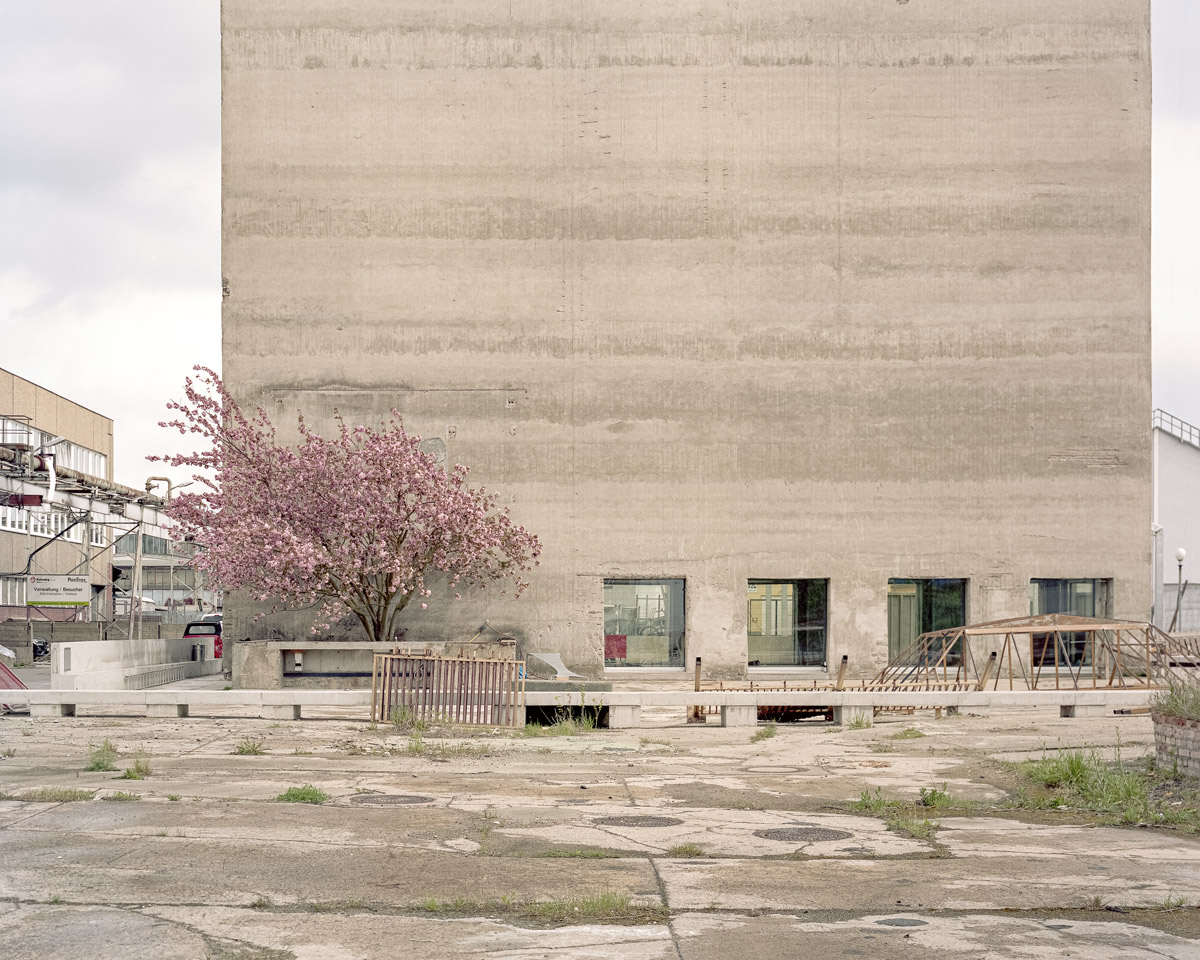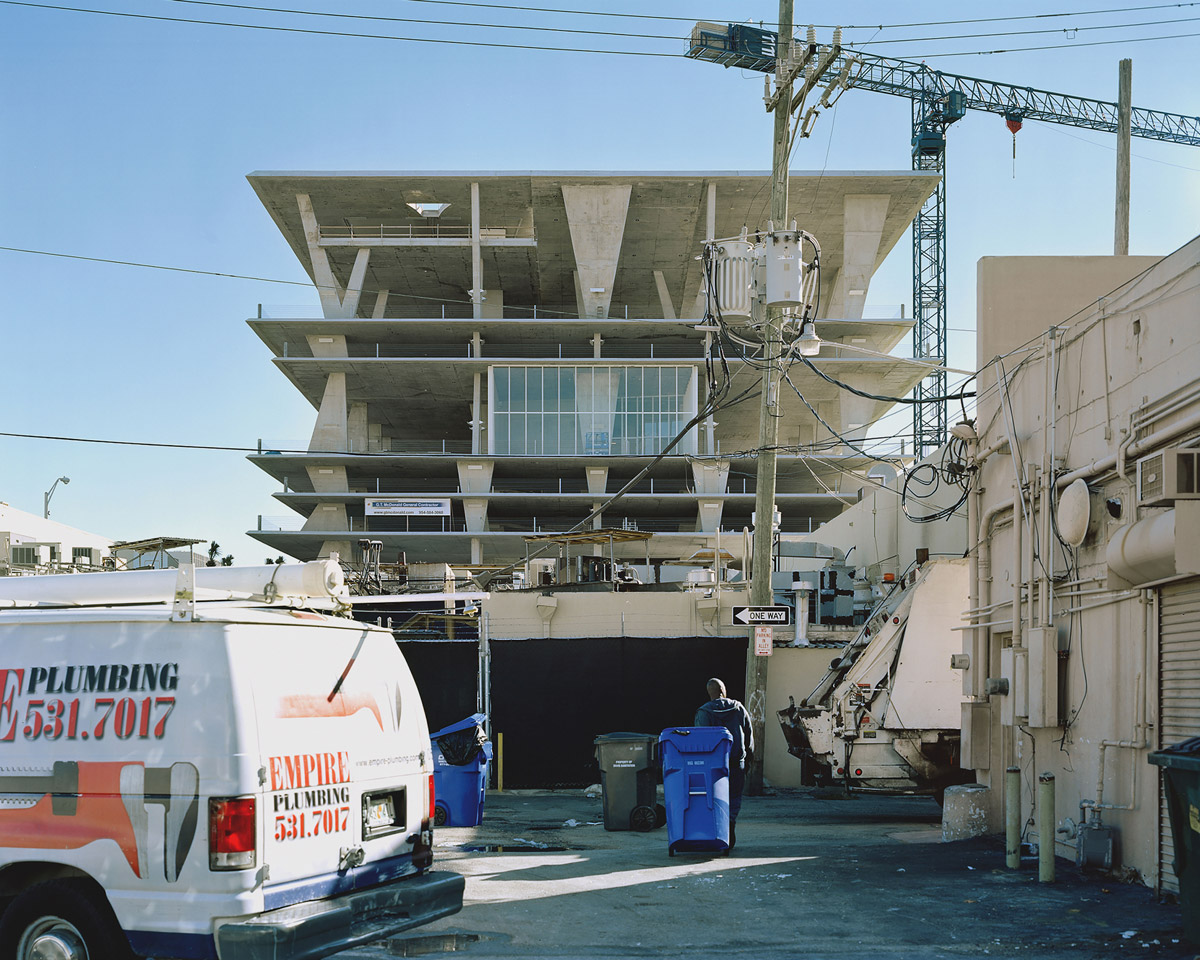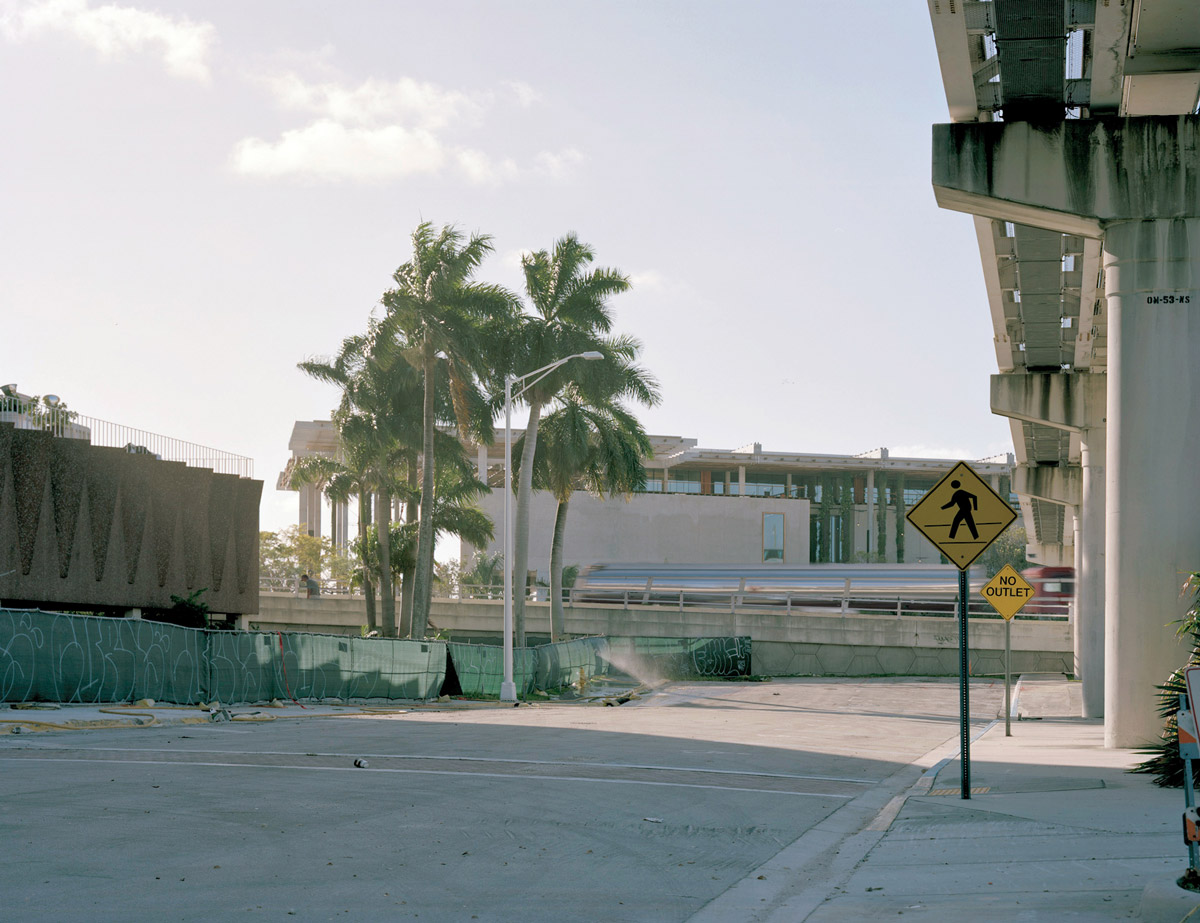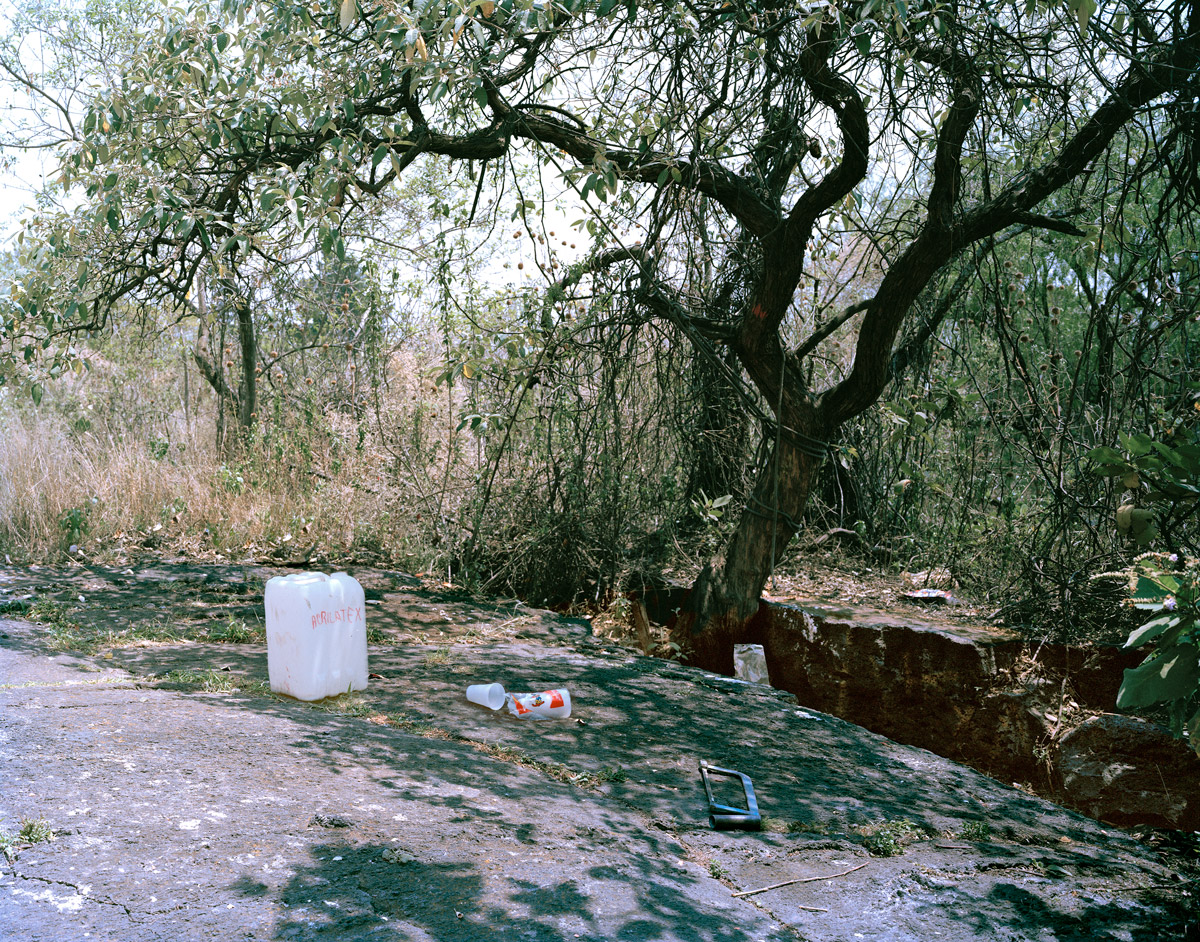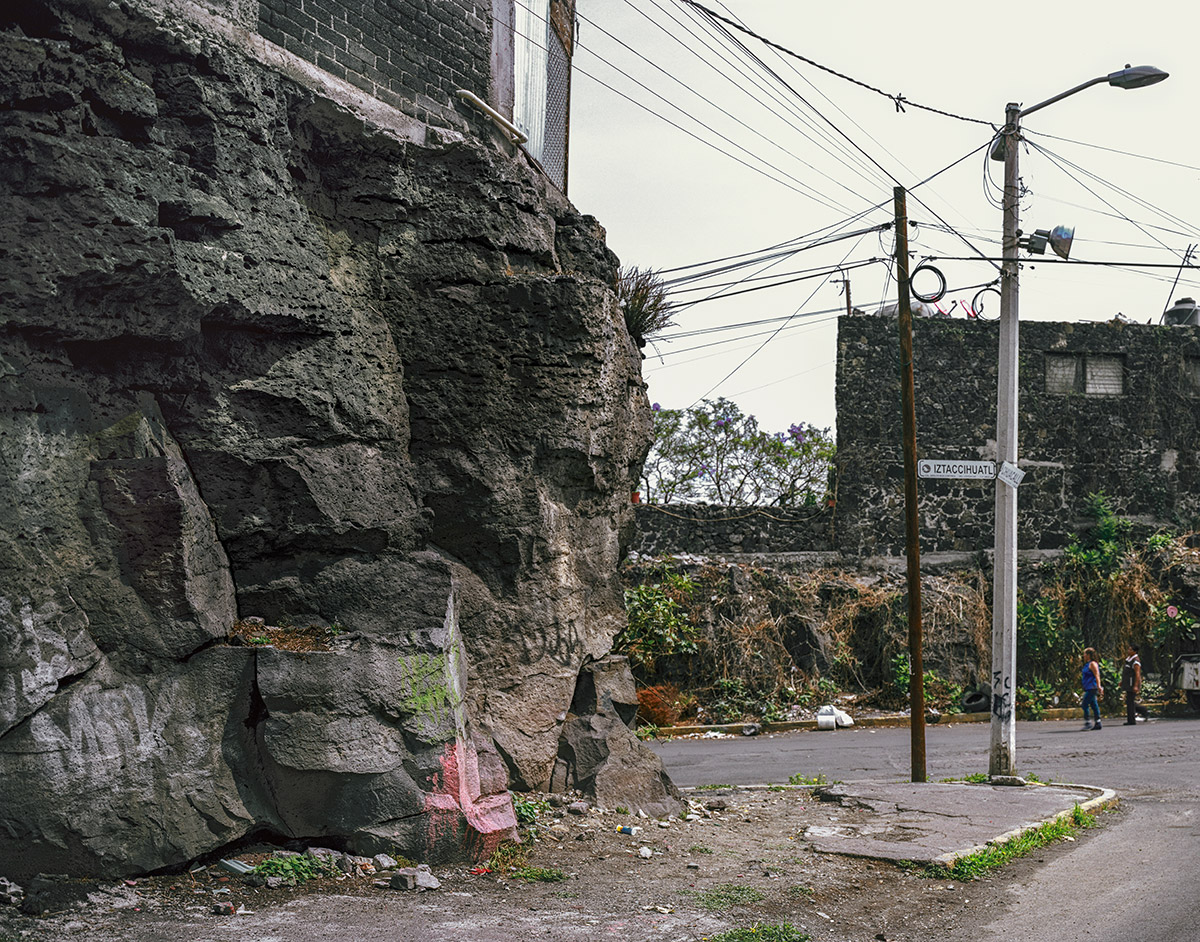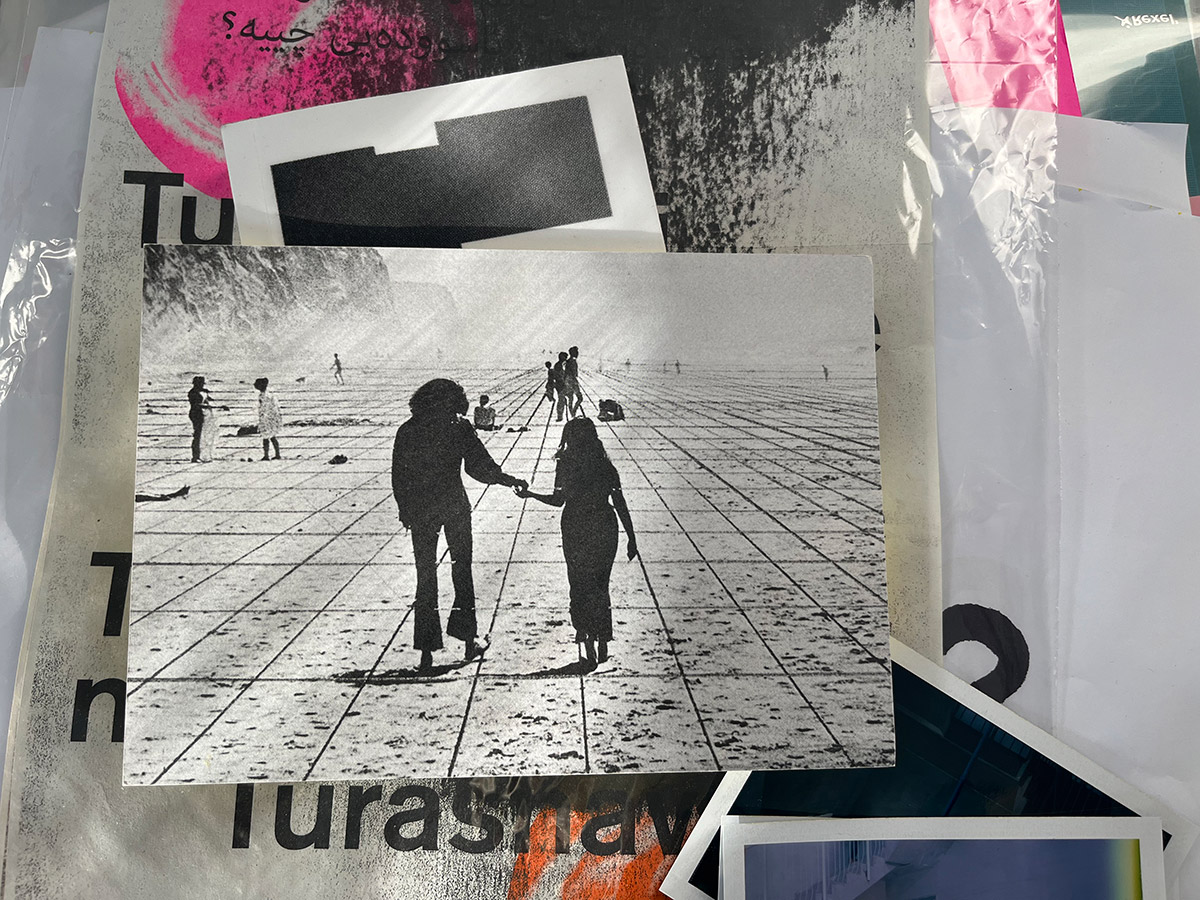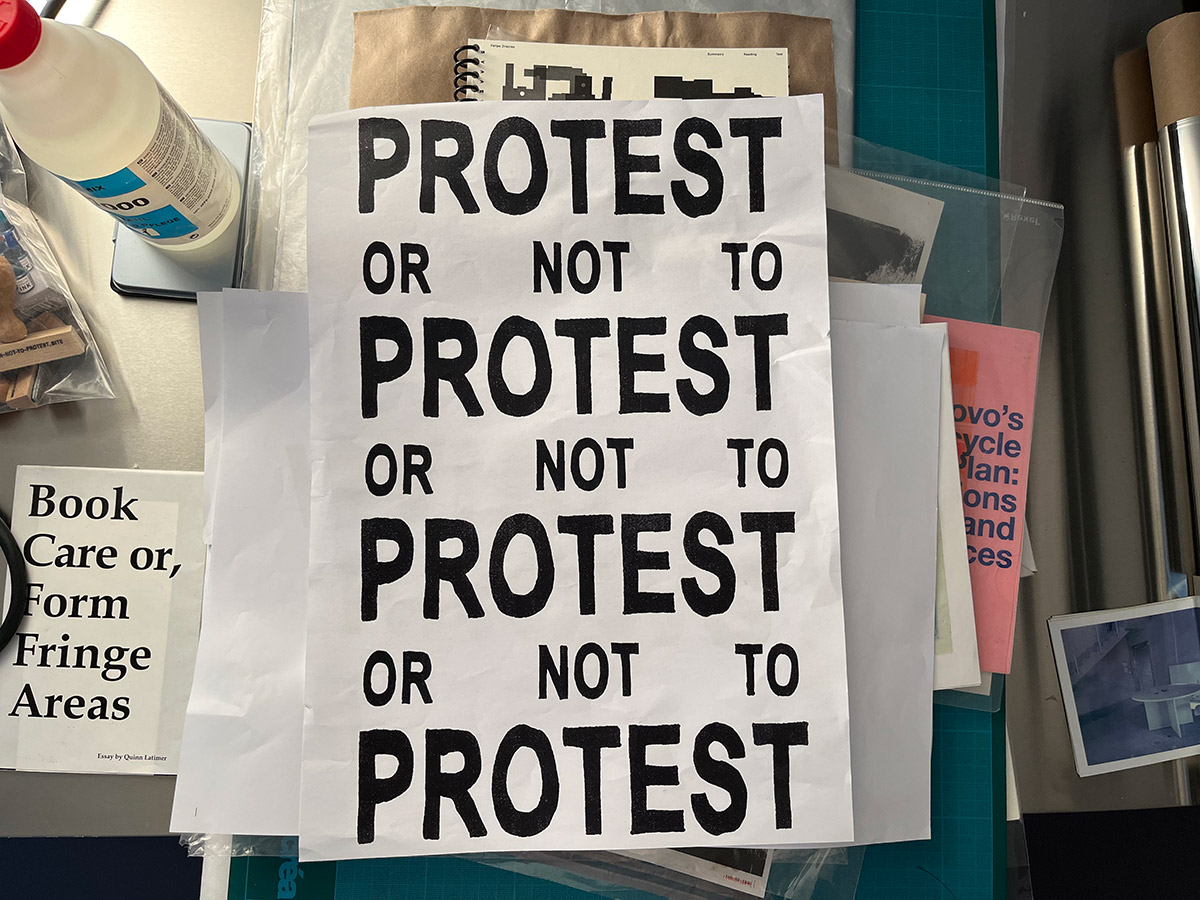22/017
Erica Overmeer
Photographer
Berlin / Palermo / Mexico City
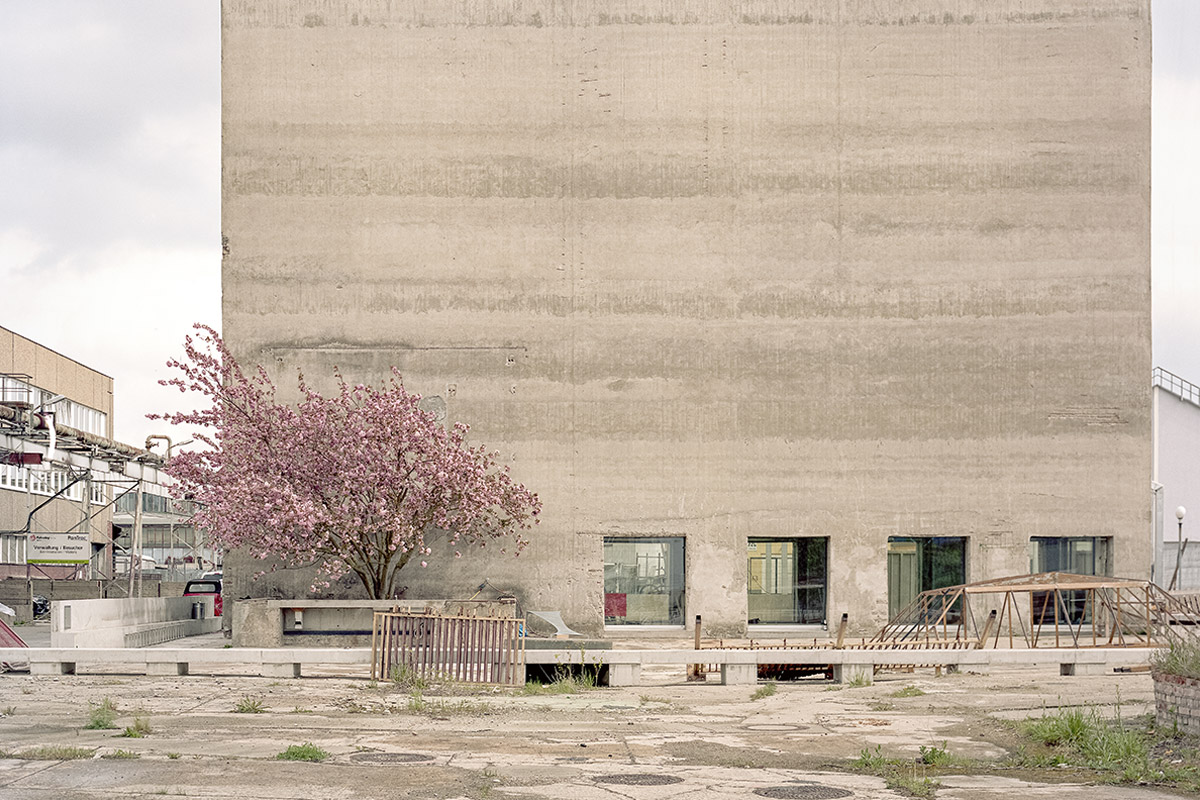
«My work can only exist in relation to a specific context and location – but I need certain conditions to arouse my interest.»
«My work can only exist in relation to a specific context and location – but I need certain conditions to arouse my interest.»
«My work can only exist in relation to a specific context and location – but I need certain conditions to arouse my interest.»
«My work can only exist in relation to a specific context and location – but I need certain conditions to arouse my interest.»
«My work can only exist in relation to a specific context and location – but I need certain conditions to arouse my interest.»
Please, introduce yourself and your work…
My name is Erica Overmeer. I was born in Amsterdam and currently live and work between Berlin, Palermo, and Mexico City. As a photographer and artist, I'm interested in the nature of spatial experience and embedded power relationships. I consider my work a spatial practice, exploring social spatial processes as mediated and negotiated through photographic images and, eventually, but not necessarily, through architecture.
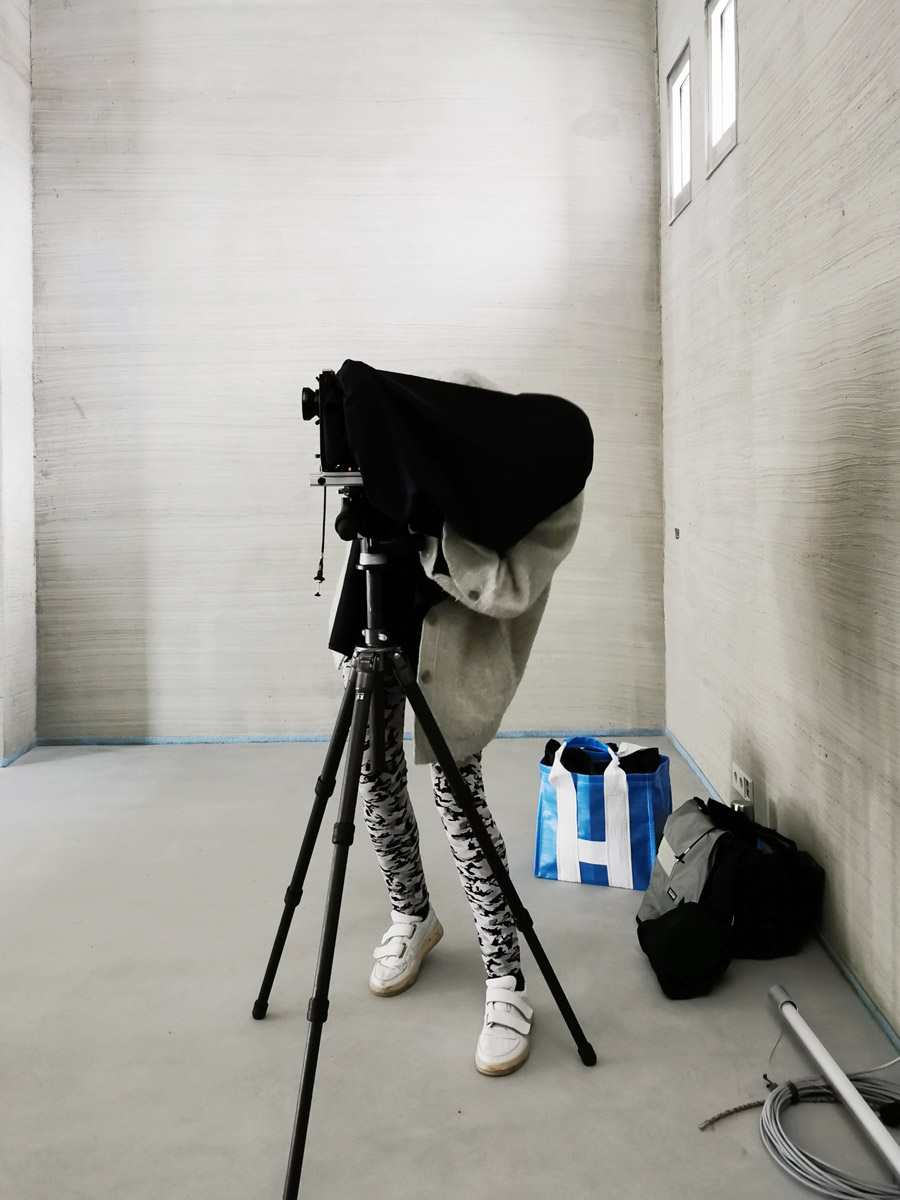
Erica Overmeer. Photo by Angelika Hinterbrandner, 2021
What comes to mind when you think about your time at university?
I studied at the Rietveld Academy, an art school in Amsterdam in the late 80s and early 90s, in a department working with alternative approaches towards architecture and so-called spatial design. It was a great time of experimentation, speculation, and discovery. No specific rules applied – yet knowledge and information were extremely local and limited. It was just before the internet and computers became available – and we still had to rely on limited resources, half-baked and gendered knowledge and expertise, stuffy and incomplete libraries, and a complete lack of intersectional thinking and exchange.
My personal and primary interest was to explore our everyday surroundings and interactions therewith on a subjective, interpersonal, and relational level. But this was not considered a topic and not part of the curriculum. Although I could not put it into words at that time, I felt out of place, not just as a result of my specific interests but also as a woman.
San Gimignano Lichtenberg, 2021 –– A recent picture of one of two towers of San Gimignano Lichtenberg, Berlin, as named by and now also in use as the archives, studio, and workshops of the Berlin based practice B+. The towers and it premises are remains the remains of a dismantled GDR graphite production plant, and since 2012 I have been observing the slow transformation of the area from a semi-abandoned industrial junkyard into its current use and occupation. This image shows everything and nothing at once. The tower is just the backdrop and pretext, foregrounding the various traces and variations of use, appropriation, occupation, and overlapping spatial concepts and interests.
How did you find your way into the field of architecture and photography?
After finishing my studies, I went to work with Herzog de Meuron, who at the time were still a small office hardly known outside of Switzerland. I was intrigued by their deeply informed way of thinking steeped in the artistic and architectural discourses of the time and the underlying conceptual approaches of their early projects. But my background and interests hardly prepared me for the reality and rigor of Swiss building practice. I started experimenting with other forms of interaction and gradually discovered the potential of photography. Working with photography provided me with a medium to engage with the discourse on my own terms – and negotiate my interests through images. It was the use of photography that eventually gave me the tool and agency I was looking for.
My early photographic work soon enough attracted the interest of architects interested in collaborations. This is how somehow over time these widely publicised collaborations came more to the foreground of my practice.
1111 Lincoln Road, Miami Beach, 2009 –– This is one of the first images I made of the work of Herzog de Meuron. In 2009 their large multi-purpose parking structure was completed, and I was there for the opening. The official entrance of the garage is very polished. Still, just around the corner, you are in an alley with improvised fences, low-hanging power lines, and garbage trucks collecting the trash at the backdoors of makeshift Chinese and Cuban restaurants. I like this picture because it shows the garage embedded in its surroundings, becoming part of very random everyday situations and occurrences, yet at the same time framing them, lifting them up.
What are your experiences working as an independent female artist in this specific field?
Tough question! And I heard you vowed to ask everybody you’re interviewing the same question now. It is a question that needs to be asked, and repeated, over, and over again. Yet, I feel very ambivalent about what I can and should share.
My own experiences so far have been complicated, complex, disconcerting, and hilarious. However, the main question here is, where are the other women in the field? Where are the positions and experiences of women working with photography and the notion of the public sphere and spatial experience? It is one thing to say that there are persisting and systemic problems that need to be addressed. The other is, can women actually be out there? Isn’t the lack of those views and experiences in themselves already a statement in and of itself?
This cognitive dissonance needs to be addressed. Repressing, ignoring, or belittling the specific visions and voices we have to bring to the field is a huge loss for the field as a whole. The more diverse the approaches we can share and reinforce, the more differentiated we can address the urgent topics of today.
But this is not just about the topics addressed – it is also about a specific experience and a very specific way of looking at, and being in the world. For me personally, this starts with the precarious situations I have put myself in to get my work done, or to be able to work at all. Precarious in a way that is extremely gender and class specific. And ultimately it ends with the disparity of representation.
These are very important subjects worthy of consideration, without making it the subject of the work itself – yet. The inherent biases and embedded power balances are evident and manifest on all levels of the field – systemic, institutional, and personal. And it all starts with who and what is represented.
PAMM, Miami, USA, 2015 –– The PAMM large museum of contemporary art in Miami also by Herzog de Meuron. This picture is among my favorites – and the situation as it is depicted here may as well no longer exist. This image is a good example of how the architecture is, or becomes, part of something larger than the architecture itself. It is as much about what you see – as about what you can't see – and what is left out of the picture.
How do you work when you photograph?
It depends on whether I’m working on my own projects or on assignment.
Though the process and approach might be different, the aspect that is similar, at least when photographing – is that I usually work with a large so-called 'Field Camera'. This camera has no viewfinder, allowing for a less perspective-centered approach and observation.
I usually spend a lot of time on site, thinking and rethinking, and negotiating the demands of the image in relation to its surroundings. While working with a heightened overall attentiveness, I pay a lot of attention to the light and tend to mess with the perspective. Whenever possible, I try to abolish perspective as such. I favor a democratic approach where everything in the picture becomes equally important, observing a situation without prioritizing anything particular.
Barranca, 2018 –– While in recent years primarily working in Mexico City, I went on purpose to see the building site of the Barranca Museum of Herzog de Meuron in Guadalajara. At the time, the construction was – or maybe still is – halted due to a shift in local politics and shifting priorities. The building at that point was just a promise, a contemplation of architecture, full of unfulfilled potential, beautiful, in breathtaking surroundings. The surroundings informed the image – and became the main actor. In terms of my work, it pushed me beyond architecture and the so-called documentary, into understanding architecture as a mode of perception, rather than as the result of a predefined building process.
How is the notion of location and context (of a specific place) influencing your work?
My work can only exist in relation to a specific context and location – but I need certain conditions to arouse my interest. Growing up in a very activist environment, I was brought up with a very specific set of ideas and experiences that shaped my personal and cultural understanding of what my surroundings were, have been, and could be. In my work I tend to gravitate towards unsettled urban areas of uncertainty, openness, and overall ambiguity. Areas and in-between spaces where the traces and interplay of social interactions and urban nature are determining factors. I worked for some years in the outskirts of Paris, especially in Sarcelles, where a “wild” social life is going on in leftovers of landscape between the modernist housing areas. In recent years, I have worked mainly in Mexico City. There is a fascinating way how people invade and appropriate public spaces with privacy and little businesses. Large parts of the city, like the area of Ajusco, have their origins in informal settlements, with people using the volcanic landscape as a building material for their homes. I am fascinated by these visible aspects of social interaction and the underlying power balances.
Ultimately – the sensorial, cultural, and visual cues embedded in these surroundings inform my approach. In the end my images are the documentation of my negotiation of the layered and entangled complexities at work – rather than the documentation of a given fact.
Yet, more and more, I have realized that I can continue the conversation beyond photography. Over the years I have extensively experimented with various publishing formats and established my own publishing company O Book Publisher – as well as being involved in Index – an Art Book Fair in Mexico City and Chicago, and now also Biennial Books in Venice, in addition to my experimental and evolving collaboration with the Mexican artist and designer Iván Martínez, notably for “Ajusco” and “Protest or not to Protest”.
Ajusco (Clearing), 2015–2020 / Ajusco (Wall), 2018–2020 –– While working in Mexico City, I became interested in the larger area of Pedregales de Coyacán and its subdivision Ajusco – a bare and harsh volcanic landscape covering large parts of the southeast of the city. The area was considered uninhabitable and an unusable wasteland until it was squatted in the late 1960s by large groups of displaced rural immigrants. Its occupants became activists, organized and politicized out of necessity, collectively building their habitats, working with the specific conditions and resources of the terrain. These two pictures show the landscape with traces of its current occupation and use, the interrelations between natural surroundings and the social spatial entanglements, that come with the terrain and the territory.
How is your work connected with and to architecture/space?
My work is connected to space in the sense of how we, or I, experience it rather than understanding space as a clearly defined architectural or built fact. I’m deeply interested in disconnecting the contemporary notion of architecture from the contemporary yet archaic notion of space. Spatial relationships, or spatial experience in itself – are not the unique result of architecture.
What space is, or what we perceive as such, on a personal, interpersonal, emotional, and relational level remains deeply unexplored. Space is ultimately a social and relational field filled with interdependent potentials, possibilities, and experiences – each of them aspects that go way beyond architecture.
Ajusco (Derivación de la Piedra), 2020 –– Following my explorations of Ajusco, I developed this publication in collaboration with the Mexican artist and designer Iván Martínez. Through an experimental narration, Ajusco describes the accumulated and entangled sensorial and spatial sensations of these surroundings. Published by O Book Publisher / Silvestre.
For you personally, what is the essence of architecture?
In my opinion, there is no essence of architecture. My personal interest lies in the dissolution of architecture, or at least to start with the dissolution of our contemporary narration of architecture – which is still told as primarily the economy and practice of designing and building objects. As far as I can come up with a valid essence of architecture, it would be the understanding that architecture is essentially a mode of thought, organizing, and experiencing the world and a culturally very rich yet limited way to think about and interact with our surroundings.
What does your desk/working space look like at the moment?
My desk is currently a sequence or succession of tables between Mexico City, Palermo, Venice, Amsterdam, and Berlin – or wherever I can open a laptop. Right now, here in front of me and next to my computer, a recent publication of Experimental Jet Set “Superstructures” – and a publication by the Mexican artist and designer and “Protest or not to Protest” partner Iván Martínez. A recent publication by Bonaventure Soh Bejeng Ndikung, “The Delusions of Care”, and a pile of “Protest or not to Protest” flags produced in Mexico City, complete the arrangement.
Some books / snapshots of my table in my studio: Superstudio, Inviation CIVA Bruxelles, 2021 Superstudio, Gli Atti Fondamentali, Vita (Supersuperficie), Viaggio da A a B, 1971 © Superstudio. Photo: Cristiano Toraldo di Francia
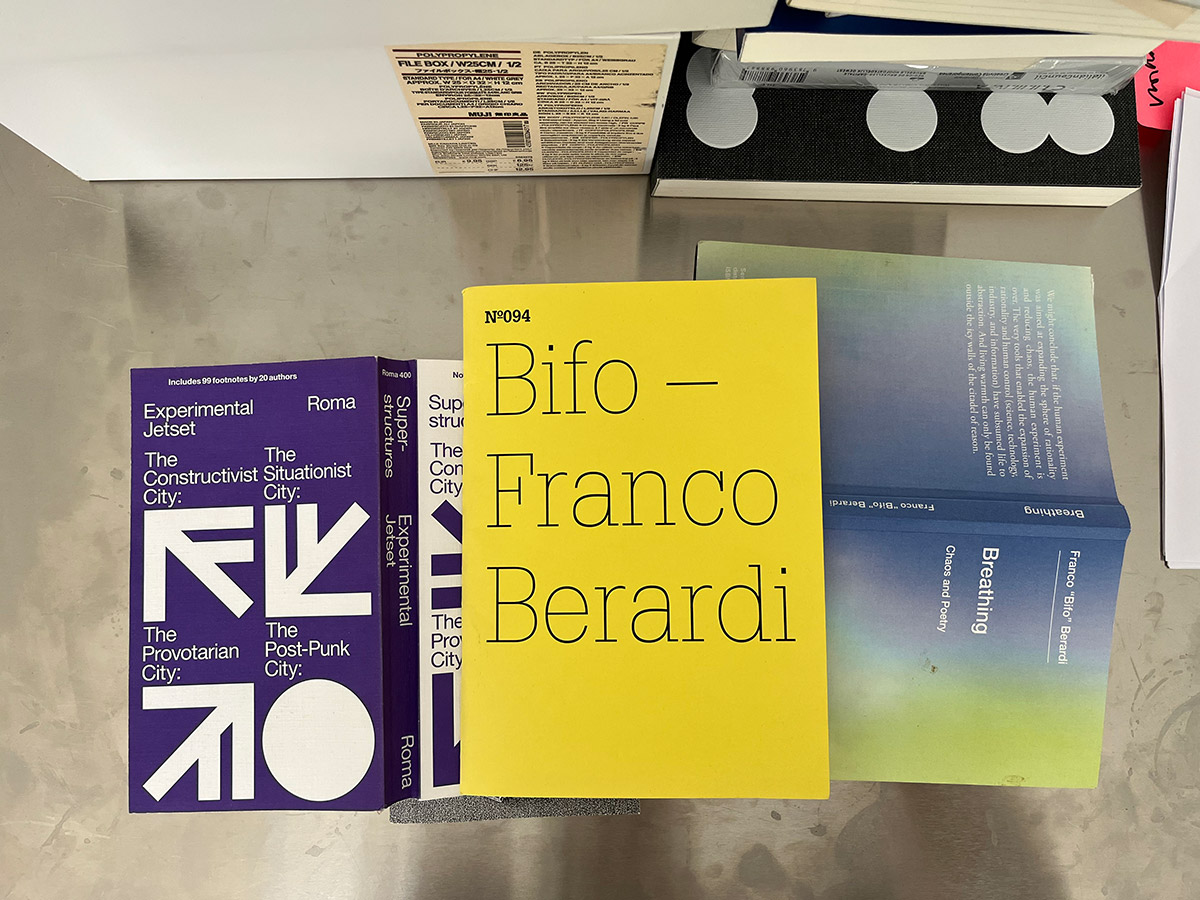
Experimental Jet Set, Superstructures, 2021, Franco 'Bifo' Berardi, Breathing, MIT Press, 2019, and Documenta Series 094, 2012
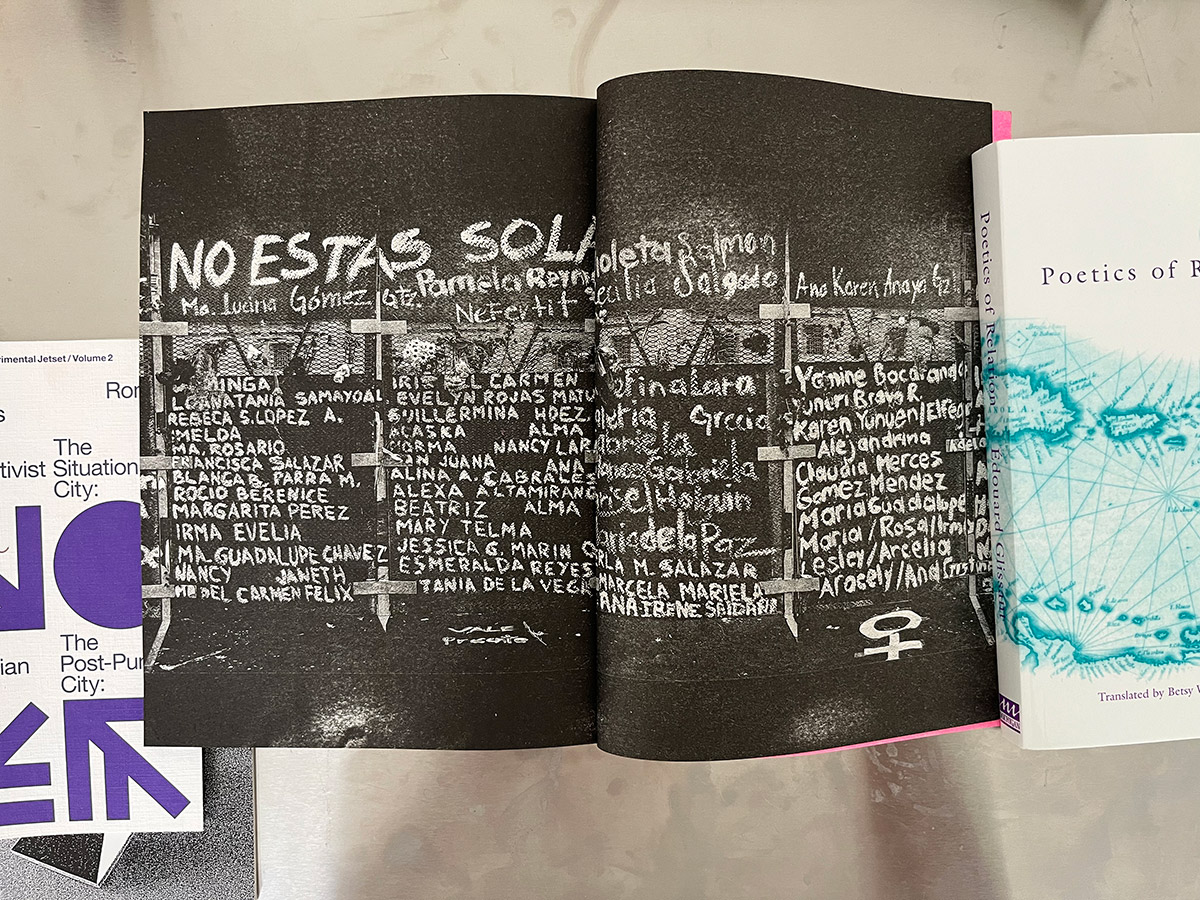
Aún te espero, Anaí Tirado Miranda, Gato Negro Ediciones / Miau Ediciones, 2021
Name your favorite books and authors…
Currently – Franco Bifo Berardi, Federico Campagna, Ursula K. Le Guinn, Rebecca Solnit, Timothy Norton, Donna Haraway, Bell Hooks, Audrey Lorde, Abraham Cruzvillegas, Theaster Gates, Eduard Glissant, Frederic Wiseman, Dan Graham, and definitely, always Superstudio!
What needs to change in the field of architecture, according to you?
What do I know? I think that through the dissolution, as mentioned above, of our contemporary understanding and collective narrative of what architecture is and what it can do, a lot of things would change. We could radically abolish its gendered and outdated focus on objects, problems, strategies, and solutions.
So-called contemporary architecture and architectural thinking are exceptionally well equipped to provide new relational thinking as well as artistic thinking is – if architects of all orientations and are ready to give up the notion and perceived singular heroics of building.
What person/collective, projects, or subjects do we need to look into right now?
Quantum physics, sociology, information theory, trauma theory, mycelium methodologies, linguistics, storytelling, cultural neuroscience, psychedelics, economics, critical race theory, co-habitation, and interspecies urbanism.
Project
Protest or not to Protest
The project currently closest to my heart is “Protest or not to Protest”. PONTP is concerned with protest and power relationships as a spatial experience. Through play, research, exchanges, publications, workshops, and exercises for real protests PONTP explores our shared and multifaceted understanding and subjective experience of entitlement, resistance, social disruption, and engagement as spatial phenomena.
Website: erica-overmeer.com, obookpublisher.com, future-documentation.site
Instagram: @ericaovermeer, @obookpublisher, @future-documentation, @protestornottoprotest
Photo Credits: © Erica Overmeer, if not stated otherwise
Interview: kntxtr, ah + kb, 07/2022
